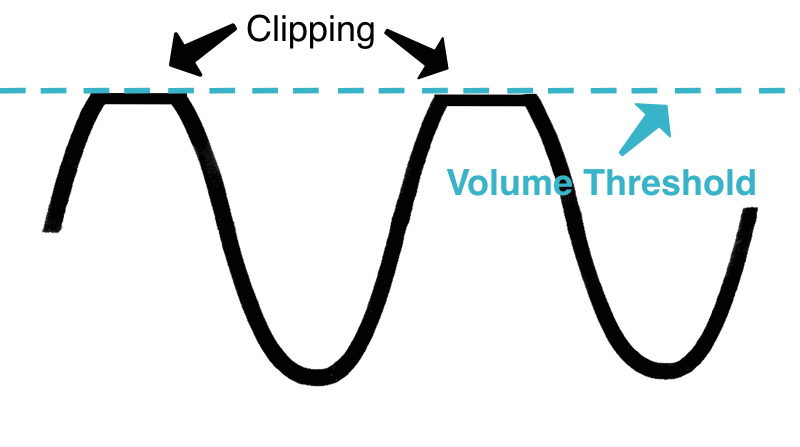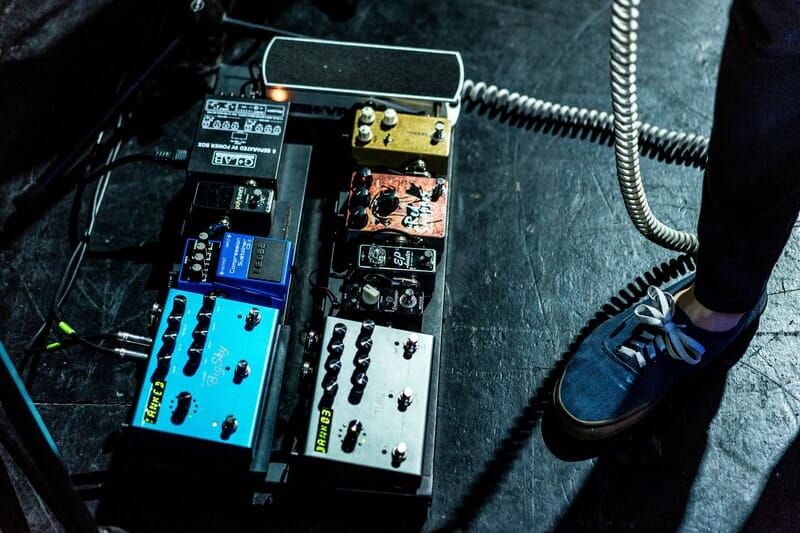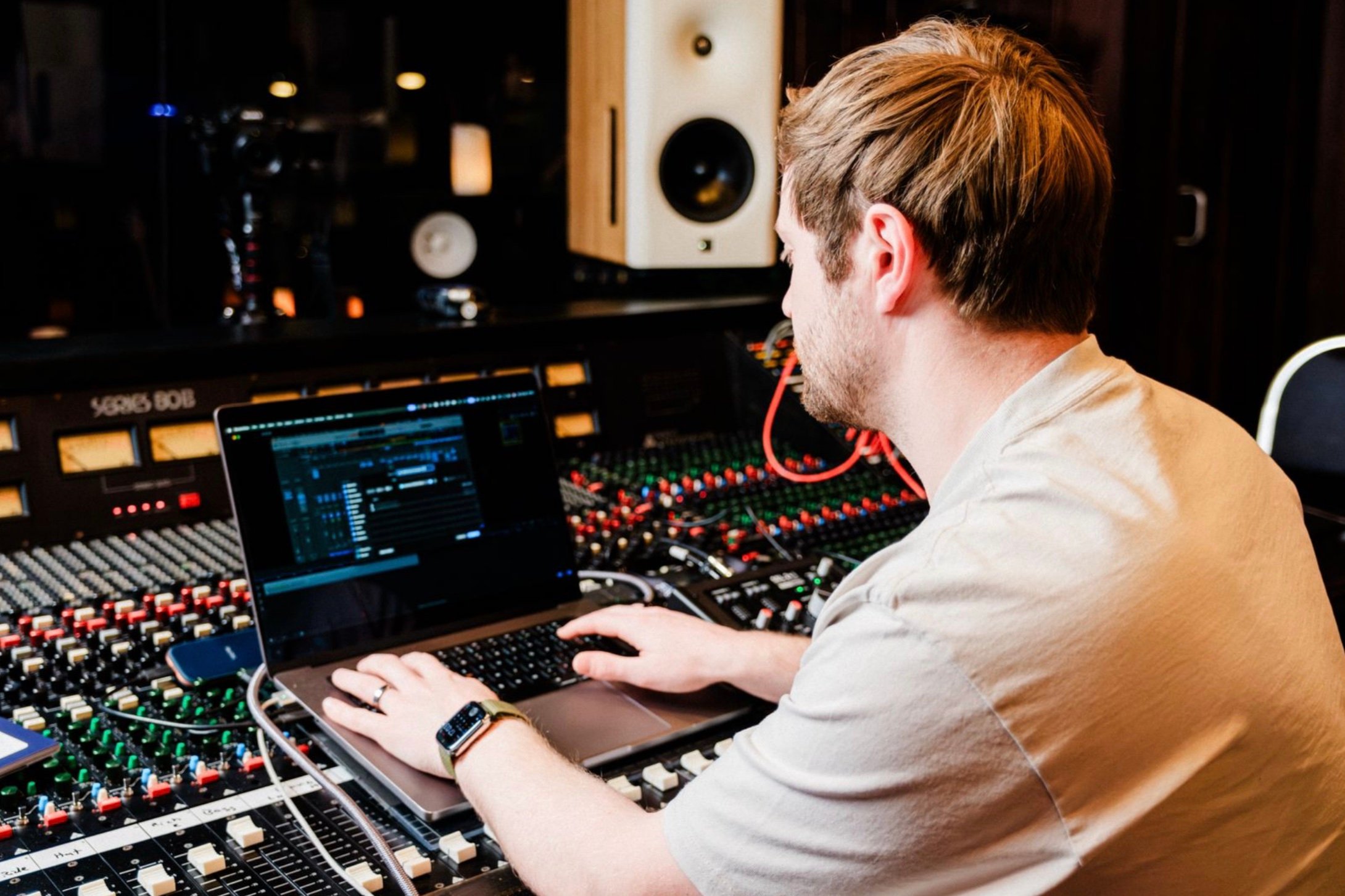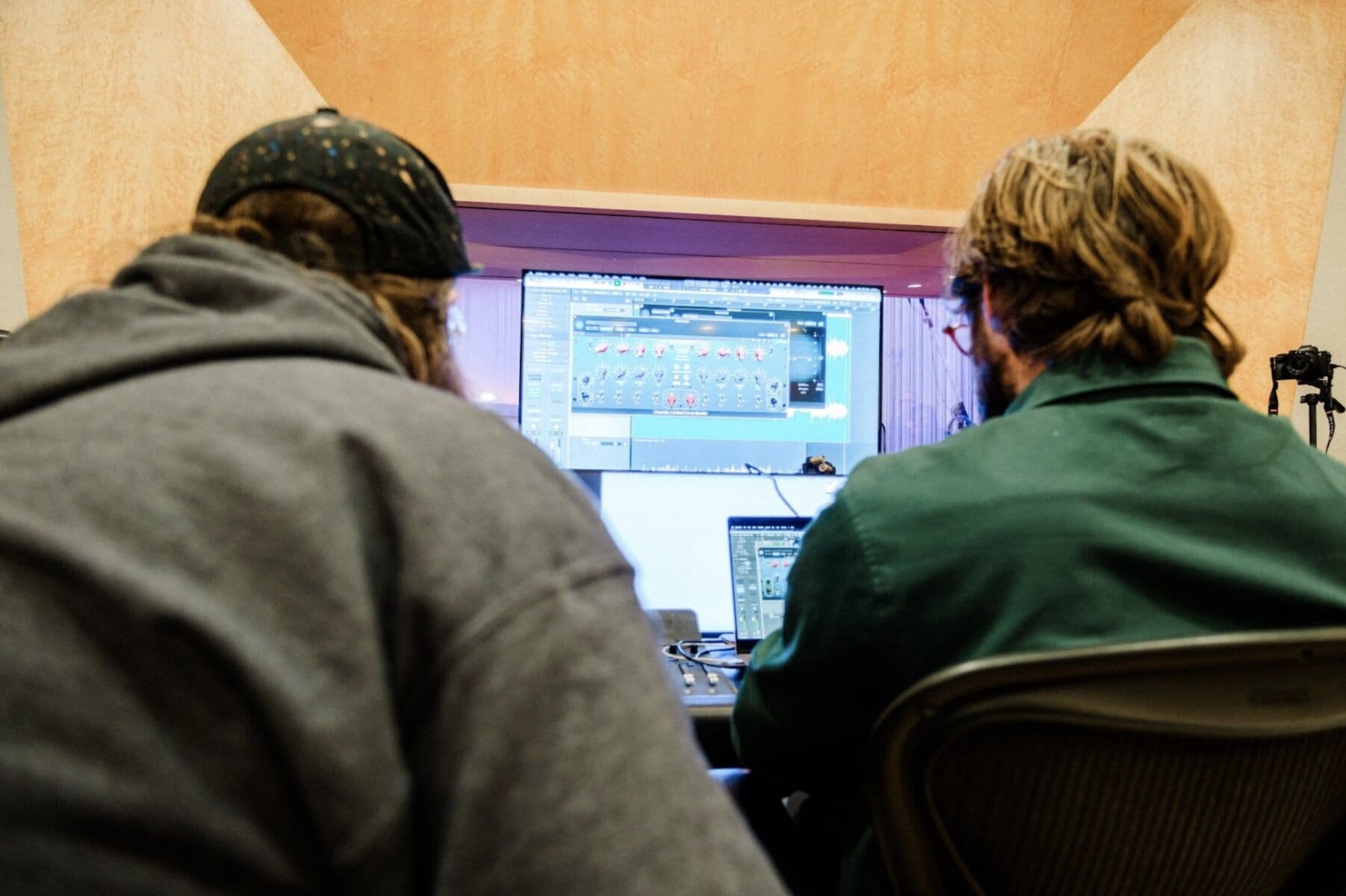Using the right kind of effects can make or break your tone. But what’s the difference between distortion and overdrive?
To help you get the most out of your sound, we’ve put together this handy guide. You’ll learn what makes overdrive and distortion different and how to use them.
Clipping
First we need to talk about clipping.
Clipping happens when the input gain is louder than a certain threshold. If the sound is too loud, that extra volume gets clipped off.

There are two different types of clipping: hard and soft clipping.
Hard clipping limits the signal really strongly.
Once the volume passes the threshold, it’s flattened. Kind of like a brickwall limiter.
This creates a lot of upper harmonics, creating a higher tone.
Soft clipping is less intense. Instead of flattening the volume, it rounds it off.
It’s still clipping, but it limits less heavily. It also creates fewer harmonics.
What Is Overdrive?
Overdrive is soft clip distortion. It tends to have a crunchy sound.
A lot of overdrives try to emulate the sound of tube distortion from a nice amp. So they tend to have a full, warm tone.
The soft clipping slightly compresses the sound, but the transients are mostly intact.
Every overdrive is different, but by and large, they don’t radically alter your whole tone. They exaggerate what’s already there.
It’s basically like turning your guitar up to 11.

You aren’t drastically changing the sound. You’re just pushing it harder.
What Is Distortion?
Distortion is a much broader term. Really, anything that causes a sound to overload is distortion.
But when it comes to pedals and plugins, distortion usually means hard clipping.
It’s a much more noticeable effect than overdrive. The heavier limiting often makes it more dynamically consistent.
The initial transients get chopped off while the sustain is brought up. This sacrifices in-your-face “bite” for long notes that slowly ring out.
The higher harmonics can be very abrasive, adding aggression.
The result is a much sharper sound that easily cuts through a busy mix.
How to Use Overdrive

One of the most common ways to use overdrive is as a boost.
Boost is subtle overdrive that compresses the sound and gives it a nice volume lift. The mid-range saturation creates a nice, full tone.
This can help you punch in a thicker sound for big parts of a song. Boost overdrive pedals are popular for guitarists of every genre.
But you don’t have to use it subtly.
For example, a lot of early blues artists and punk bands didn’t have expensive gear.
To get the powerful tone they wanted, they’d crank their amps up to 11. This would overdrive the signal, resulting in super crunchy guitars.
Check out the guitar and harmonica on “Mannish Boy” by Muddy Waters.
You can practically feel the heat coming off those amps!
If you want grit, crank your overdrive settings.
How to Use Distortion

We have distortion to thank for many of the most iconic guitar tones of all time. Brutal heavy metal chugs and soaring pop-punk leads both rely on heavy distortion.
As you can imagine, distortion is best for when you want noticeable drive.
Distortion adds tons of sustain. Every note you play will ring out much longer than usual.
It also adds a ton of harmonics. This makes it hard to pick out specific notes in a chord.
That’s why distortion makes simple power chords sound huge. But more complex chords often sound messy.
There are all kinds of distortions with different levels of hard clipping. You’ll definitely want to research distortion plugins and pedals before picking one.
That being said, there are some general rules of thumb you can go by.
For the most part, distortion blurs groups of notes together. Especially in the lower ranges.
But it also makes single notes pierce through the mix.
So a distorted rhythm guitar can easily create a huge wall of sound, while a distorted lead will rise to the top.
When to Use Overdrive vs Distortion
It largely depends on how close you already are to the tone you want.
If you’re pretty close but you want a little more oomph, go with overdrive. Same goes for when you want more of a trashy, garage rock sound.
If you want to radically change the tone into something heavier, pick distortion.
And there’s nothing stopping you from using them together! Plenty of artists rely on both to craft their sound.
There are tons of websites and YouTube channels dedicated to dissecting artists’ gear. So if you want to know how someone gets their sound, google it!
A few rig rundowns will help you get a solid idea of what you want.
Fuzz
You may also want to check out fuzz.
Most famously used by Jimi Hendrix, fuzz sounds dark and hazy.
Fuzz is supersaturated, creating a thick tone. It tends to roll off a lot of higher frequencies.
Anyone drawing from psychedelic or shoegaze will definitely want to check out fuzz.
Pedals

Looking for a pedal or plugin for your rig? Let’s go over a few solid options to check out.
You’ll definitely want to see how a pedal sounds before buying it. Ideally, you’ll want to actually play through the pedal with your own instrument.
Overdrive
The Ibanez Tube Screamer is probably the most famous overdrive of all time. It’s perfect for blues fans or anyone who wants an extra boost for their existing tone.
For something a little heavier, check out the Beetronics Fatbee.
Metal artists should check out Fortin’s pedals. The 33 and Grind are both famous overdrives for cleaning up a messily distorted sound.
These pedals focus the sound. That allows you to run into a high gain amplifier or distortion pedal without it sounding flubby.
Distortion
The market for distortion pedals is absolutely huge. Make sure you do plenty of research before spending any money
The Boss DS-1 is a distortion superstar.
It’s been used by just about everyone: Kurt Cobain, John Frusciante, and every guitarist who’s played at your favorite coffee shop.
Its low price point makes many assume it’s for beginners. But the Boss DS-1 has proven many times over that it can produce some truly iconic tones.
The Seymour Duncan Palladium is a great option for anyone who wants more control. It has three gain stages and a mid-range frequency sweeper, helping you avoid mud.
It even has an overdrive boost that you can switch on and off! It may be pricier than the DS-1, but it does the job of three pedals at once.
Plugins
Your DAW should have a stock distortion plugin. It might come with an overdrive as well.
But if those aren’t doing it for you, there are some free options worth checking out.
Ignite Amps has a few free emulations of classic pedals.
For example, their TSB-1 is a software version of the Tube Screamer. The ProF.E.T. is a high gain distortion.
If you have a guitar effects suite, you probably have a few distortions and overdrives on hand.
Conclusion
Overdrive and distortion are both useful for tons of tones, especially for guitarists. But there are some key differences you’ll want to keep in mind!
Make sure you play to both effects’ strengths while crafting your sound.














